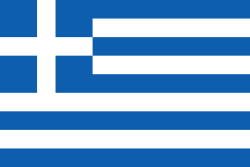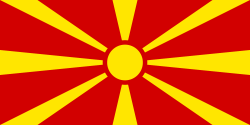FR74 Flame Resistant Anti-Static Two Tone Polo Shirt
This high quality, long sleeve poloshirt offers exceptional protective properties to the wearer. Features include concealed front button placket opening, contrast rib collar and cuffs.
Features:
- Inherent flame resistant qualities will not diminish with washing
- Protection against radiant, convective and contact heat
- High cotton content for superior comfort
- Ribbed cuffs for added comfort
- Concealed button closure
- Contrast colouring for added style
- Premium sew on flame resistant reflective tape
- 40+ UPF rated fabric to block 98% of UV rays
- CE certified
- CE-CAT III
Fabric Information:
Shell Fabric: Modaflame Knit: 60% Modacrylic, 39% Cotton, 1% Carbon Fiber, 210g
Standards:
EN ISO 11612 (A1, B1, C1, F1)
EN 1149-5
IEC 61482-2 IEC 61482-1-1 (Elim 4.4 CAL/cm² )
IEC 61482-2 IEC 61482-1-2 APC 1
EN ISO 20471 Class 2
ASTM F1959/F1959M-12 (EBT = 4.3 CAL/CM² (HAF = 66%))

PORTWEST
For over 117 years we’ve possessed an unrelenting ambition to produce the world’s most trusted and requested protective wear. Through the decades, we have continuously proven our dedication to quality, producing world beating safety garments, foot protection, hand protection and PPE, while pushing the boundaries in protection technologies. Technologies that make the workplace a safer place.
EN ISO 11612 Heat & Flame
Letter A (EN 15025) This test consists of applying a flame to a fabric sample for 10 seconds. To pass the test, the after flame & smoulder times and formation of holes must be within the tolerances within the standard. The application of a flame can take place in two ways: Code Letter A1 Surface Ignition, ISO15025 A Procedure A (leads to Class A1), the flame is applied horizontally to the face of the fabric No specimen shall permit any part of the lowest boundary of any flame to reach the upper or either vertical edges No specimen shall give hole formation of 5mm or greater in any direction, except for an inter-lining that is used for specific protection other than heat and flame protection. No specimen shall give flaming or molten debris The mean value of after flame time shall be ≤ 2s The mean value of afterglow time shall be ≤ 2s Code Letter A1 Edge Ignition, ISO15025 B Procedure B (leads to Class A2), the flame is applied to the bottom edge of the fabric sample. No specimen shall permit any part of the lowest boundary of any flame to reach the upper or either vertical edges No specimen shall give flaming or molten debris The mean value of after flame time shall be ≤ 2s The mean value of afterglow time shall be ≤ 2s Letter B (ISO 9151) Convective Heat: determination of the heat transmission when exposed to flames. The sample is held above the flame and the rise in temperature on the topside of the sample is measured with a calorimeter. The length of time the sample can remain exposed before its temperature rises by 24 °C is determined. B1: 4 < 10 seconds, B2: 10 < 20 seconds, B3: 21 seconds and longer Letter C (ISO 6942) Exposure to Radiant Heat. In this test, a fabric sample is exposed to radiant heat (infrared rays). The temperature on the reverse (unexposed) side of the sample is registered using a calorimeter. Subsequently, the length of time the sample the sample can remain exposed before its temperature rises by 24°C is measured. The test procedure is the same as ISO 11611, but the classification is different: C1: 7 < 20 seconds, C2: 20 < 50 seconds, C3: 50 < 95 seconds, C4: 95 seconds and longer Letter D and E (ISO 9185) D = Aluminium E = Molten Iron Determining the level of protection against spatters of molten metal. A membrane (with similar properties to human skin) is attached to the reverse of the fabric sample sequentially rising quantities of molten metal (Aluminium or Iron as applicable) are splashed on the sample. The quantity of molten metal which deforms the membrane is determined. The classification for molten aluminium is: D1: 100 < 200 grams, D2: 200 <350 grams, D3: 350 grams and more The classification for molten iron is: E1: 60 < 120 grams, E2: 120 < 200 grams, E3: 200 grams and more Letter F (ISO 12127) This is a new test to establish a value for contact heat. The classification in this respect: F1: 5 < 10 seconds, F2: 10 < 15 seconds, F3: 15 seconds and longerDetails
IEC 61482-2 Protective Clothing Thermal Arc Hazards
Standard for protective clothing against the thermal effects of an electric arc event. Two different test methods: Open Arc IEC 61482-1-1 and Box test EN 61482-1-2. OPEN ARC - IEC 61842-1-1 (USA). The first result, ELIM - The maximum incident energy (cal/cm²) the garment can withstand before the wearer would have a 0% probability of a second degree burn. The second result is either: ATPV (Arc Thermal Performance Value, cal/cm²) The maximum incident energy the garment can withstand before the wearer would have 50% probability of a second degree burn or EBT (Energy Break Open Threshold, cal/cm²) The incident energy at which a 50% probability of a breakopen occurs resulting in a second degree burn. Since ELIM indicates an energy value at 0% probability of a second degree burn and ATPV/EBT at 50% probability, the ELIM value is usually lower than ATPV/EBT. Large differences between the ELIM and ATPV/EBT results highlight the importance of wearing several layers of garments to ensure you are properly protected. EN 61482-1-2 (Europe) is evaluated in two classes in the same test: APC1 protects against electric arc of 4kA (arc energy 168 kJ), APC2 protects against electric arc of 7kA (arc energy 320 kJ). Unlike the American standard, there is not a result scale in this garment tests, only two levels where the garment either passes or fails. A garment with one layer of Flame Retardant fabric usually passes APC 1 - even thin shirt fabrics. To pass APC 2, a system with two or three fabric layers or a lined garment is normally required. This makes it more difficult to adapt the protection to the risk, without compromising on comfort. As APC 1 is a relatively low level of protection, we always recommend a basic protection of at least 8 cal/cm².Details
EN 1149 Anti-Static (ATEX)
This standard specifies PPE Clothing used in explosive environments (i.e. ATEX) where there is a risk that the garments could create sparks (source of ignition), which in turn could ignite explosive materials. Anti-Static garments marked EN 1149-5 are intended to be worn in Atex zones 1, 2, 20, 21 and 22. In oxygen enriched atmospheres or in zone 0, the Anti-Static garments should not be used without first being approved by a qualified Safety Engineer, as wear and tear can affect the protection of the garment and it is crucial that they are worn the correct way in these environments.Details
Inherent FR Garments
Inherent fabric guarantees lifelong protection for the wearer. The FR properties lie in the molecular structure of the fibres and cannot be washed or worn out. PROS: excellent heat and ARC protection, excellent colour fastness even after numerous washings hence good cost in use performance, typically lighter weight solutions with excellent comfort levels, typically used in less dirty environments where the corporate look is also important. CONS: limited protection against molten metal splash, typically a more expensive fabric than FR treated. The most common FR fibers used in protective clothing are modacrylics and aramidsDetails
Share this product:
| Garment Size | S - Small or M - Medium or L - Large or XL - XLarge or XXL - XXLarge or XXXL - 3XLARGE or 4XL - 4XLarge |
| Color | YNR Yellow/Navy |
Once the user has seen at least one product this snippet will be visible.





